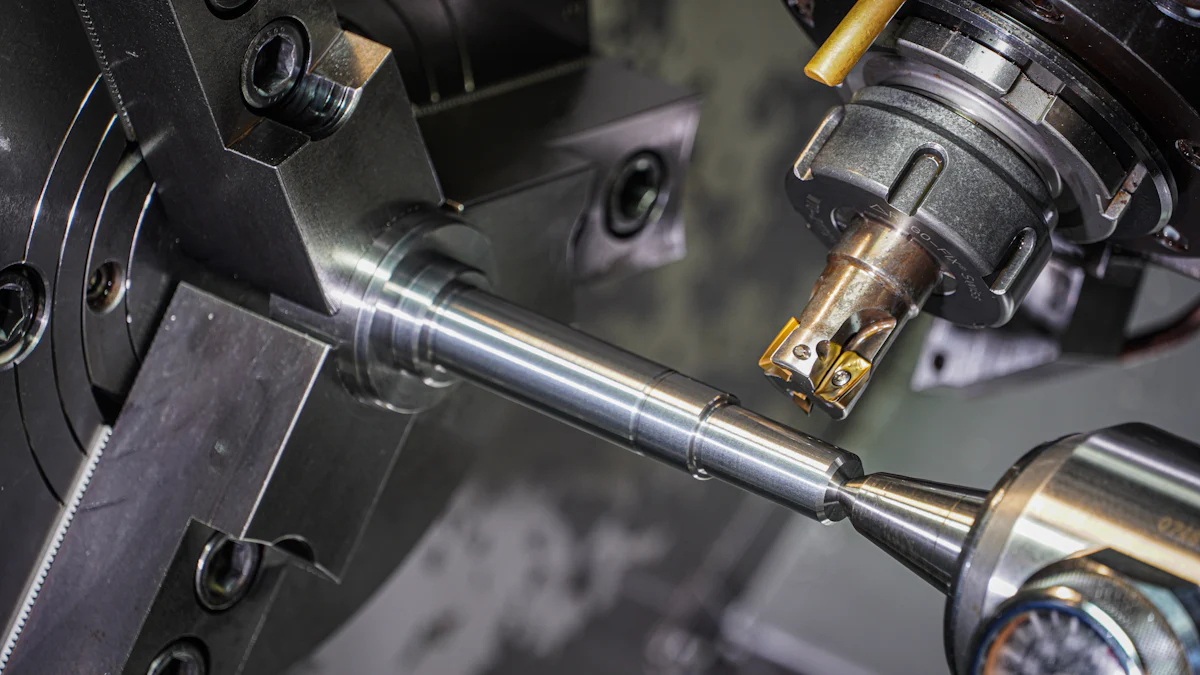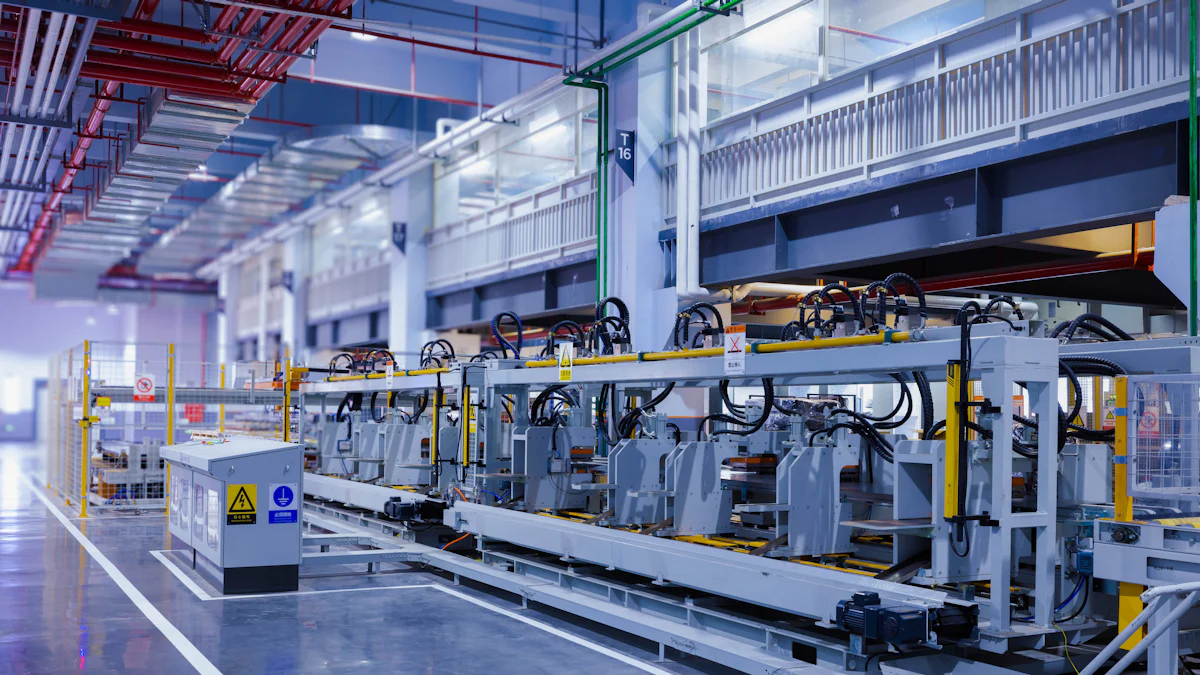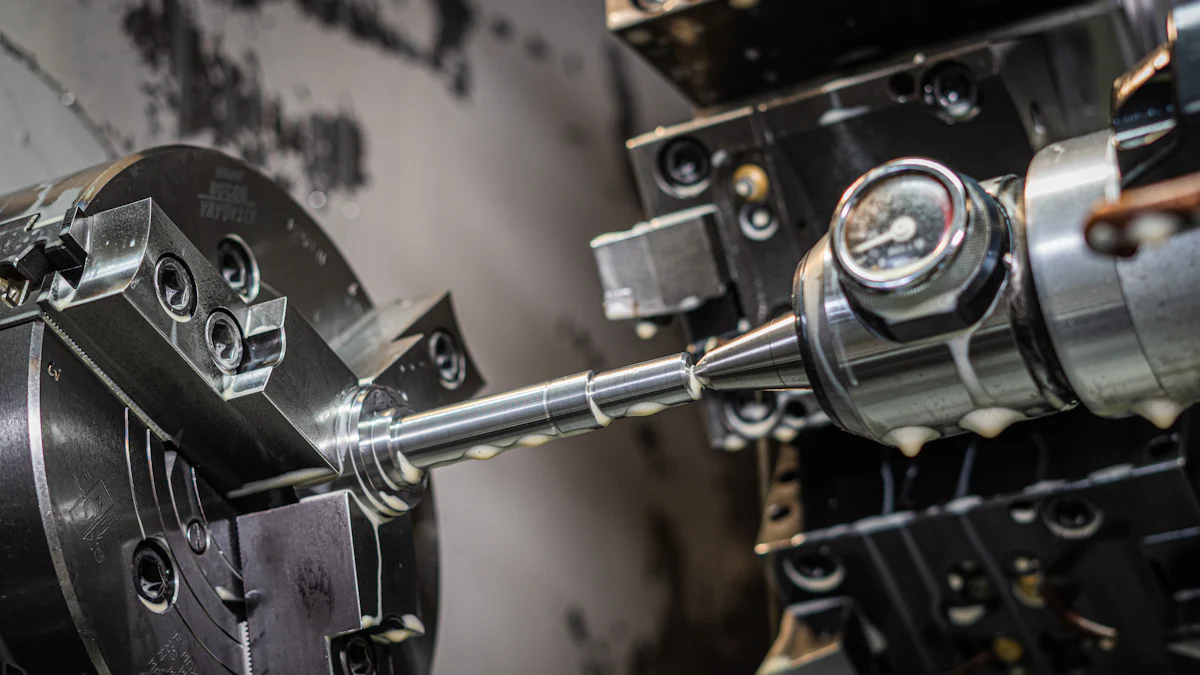What Is Functional Testing in CNC and Die Casting Processes

Functional testing plays a vital role in CNC and die casting manufacturing. It ensures that components meet precise specifications and perform as intended under real-world conditions. This process evaluates the functionality of parts, identifying defects like surface irregularities or tool breakage that could compromise final quality. By adhering to strict standards, functional tests help manufacturers achieve exceptional results, such as defect rates as low as two parts per million (PPM). Compliance with standards not only guarantees product reliability but also enhances customer trust and satisfaction.
Key Takeaways
Functional testing is essential for ensuring that CNC and die casting components meet precise specifications and perform reliably under real-world conditions.
By implementing rigorous quality control measures, manufacturers can achieve defect rates as low as two parts per million, enhancing product reliability and customer satisfaction.
Advanced tools like Coordinate Measuring Machines (CMMs) and spectrometers are crucial for accurate dimensional analysis and material composition verification.
Non-destructive testing methods, such as X-ray and ultrasonic testing, help identify internal defects without damaging components, ensuring structural integrity.
Integrating functional testing into the manufacturing workflow minimizes rework and waste, leading to improved efficiency and consistent product quality.
Regular calibration of testing equipment and ongoing training for personnel are vital for maintaining accuracy and reliability in functional testing processes.
Proactive identification of defects through functional testing not only enhances manufacturing efficiency but also boosts customer confidence in the final products.
The Role of Functional Testing in CNC and Die Casting

Ensuring Product Quality and Precision
Functional testing ensures that die casting parts meet the required specifications and perform as intended. By verifying the accuracy of dimensions, tolerances, and surface finishes, this process guarantees that each component aligns with standards set by the industry. For example, quality control measures like quality testing and quality inspection help detect defects such as porosity, cracks, or dimensional inaccuracies in metal casting. These defects, if left unchecked, could compromise the quality of the final product.
In CNC machining and the die casting process, achieving high accuracy is critical. Tools like Coordinate Measuring Machines (CMMs) play a vital role in ensuring precise measurements. These machines evaluate the geometric tolerances of parts, ensuring that every detail meets the design intent. This meticulous approach not only enhances quality but also reduces the likelihood of rework or scrap, saving time and resources in manufacturing.
Enhancing Reliability and Safety of Components
Functional testing evaluates whether die casting parts can withstand real-world conditions without failure. For instance, quality control processes often include endurance and stress testing to assess the durability of metal components. This ensures that parts used in critical applications, such as automotive or aerospace, perform reliably under extreme conditions.
By adhering to strict standards, manufacturers can ensure that aluminum die casting and other metal casting components meet safety requirements. Non-destructive testing methods, such as X-ray detectors, allow for internal defect detection without damaging the parts. This approach enhances the reliability of die casting parts, ensuring they meet both functional and safety criteria.
Reducing Defects and Improving Manufacturing Efficiency
By identifying issues early, such as material inconsistencies or tooling errors, manufacturers can address problems before they escalate. This proactive approach reduces defect rates and improves overall manufacturing efficiency.
For example, quality control tools like spectrometers analyze the composition of metal alloys used in die casting. This ensures that the materials meet the required standards for strength and durability. Additionally, hardness testers evaluate the resistance of metal casting components to deformation, further enhancing quality and performance.
Efficient testing processes also streamline production workflows. Automated systems, such as CMMs, enable rapid and accurate inspection of parts, reducing downtime and increasing throughput. By integrating quality testing into the manufacturing process, companies can achieve consistent results and maintain high quality standards.
Steps Involved in Functional Testing
Preparation for Testing
Preparation forms the foundation of effective functional testing in die casting and CNC machining. This stage involves gathering essential tools, equipment, and materials required for the process. Technicians ensure that testing instruments, such as Coordinate Measuring Machines (CMMs), spectrometers, and hardness testers, are calibrated to deliver accurate results. Proper calibration minimizes errors and ensures compliance with industry standards.
The preparation phase also includes reviewing the specifications of die casting parts. Engineers analyze design blueprints to identify critical dimensions, tolerances, and material properties. This step helps determine the specific tests needed to evaluate the quality and functionality of the components. For instance, CMMs are often used to measure complex geometries and tight tolerances, ensuring dimensional accuracy before proceeding to the next stage.
Additionally, technicians simulate working conditions to replicate real-world scenarios. Functional testing rigs play a crucial role in this process by assessing the fit and function of assembled parts under actual use conditions. This simulation ensures that die casting parts meet performance expectations and align with customer requirements.
Execution of Functional Tests
The execution phase involves conducting the actual tests to evaluate the performance and quality of die casting parts. Technicians use a variety of testing methods depending on the specific requirements of the components. For example, spectrometers analyze the composition of metal alloys, ensuring that materials meet the necessary standards for strength and durability.
Non-destructive testing methods, such as X-ray detectors, are employed to identify internal defects like porosity or cracks without damaging the parts. These tests provide valuable insights into the structural integrity of die casting components. Hardness testers assess the resistance of metal parts to deformation, further verifying their suitability for demanding applications.
Functional testing also includes endurance and stress tests to evaluate the durability of die casting parts. These tests simulate extreme conditions to ensure that components can withstand real-world challenges. By executing these tests meticulously, manufacturers can identify potential issues early and take corrective actions to maintain high-quality standards.
Evaluation and Analysis of Results
The final stage of functional testing focuses on evaluating and analyzing the results obtained during the execution phase. Technicians compare the test data against predefined specifications to determine whether the die casting parts meet the required standards. Any deviations from the expected results are documented for further investigation.
Advanced tools, such as CMMs, play a significant role in this stage by providing precise measurements and thorough 3D metrology. These tools help engineers identify dimensional inaccuracies and geometric deviations, ensuring that every detail aligns with the design intent. The data collected during this phase also aids in optimizing the manufacturing process and improving overall efficiency.
Manufacturers use the insights gained from functional testing to enhance the quality of their products. By addressing identified issues and implementing corrective measures, they can reduce defect rates and improve customer satisfaction. This continuous improvement cycle ensures that die casting parts consistently meet industry standards and exceed performance expectations.
Key Equipment and Tools Used in Functional Testing

Functional testing in die casting and CNC machining relies on advanced tools to ensure dimensional accuracy, material integrity, and overall quality. These tools play a critical role in evaluating die casting parts and ensuring they meet the required specifications.
Dimensional Measurement Tools
Coordinate Measuring Machines (CMMs) for precise dimensional analysis
Coordinate Measuring Machines (CMMs) are indispensable for dimensional inspection in die casting and CNC machining. These machines provide precise measurements for complex geometries and tight tolerances. By utilizing tactile and non-contact probes, CMMs capture detailed dimensional data, enabling thorough 3D metrology and geometric verification. Manufacturers use CMMs to inspect critical features of die casting parts, validate dimensional accuracy, and generate comprehensive reports. This ensures that every component aligns with the design intent and meets industry standards.
"CMMs simplify the inspection process by automating measurements, reducing human error, and enhancing efficiency in high-pressure die casting workflows."
Calipers and Micrometers for basic measurements
Calipers and Micrometers serve as essential tools for measuring external and internal dimensions of die casting parts. Calipers, often digital, measure thickness and width with high precision, while micrometers gauge diameters of small holes or intricate features. These tools ensure that parts meet their dimensional specifications during both initial and final inspection stages. Their simplicity and accuracy make them a staple in quality control processes for die casting mold components.
Hardness Testing Equipment
Rockwell and Brinell Hardness Testers for material hardness evaluation
Hardness testing evaluates the resistance of die casting parts to deformation under stress. Rockwell and Brinell Hardness Testers are widely used for this purpose. Rockwell testers measure hardness by determining the depth of penetration under a specific load, while Brinell testers assess the diameter of an indentation made by a steel or tungsten carbide ball. These methods ensure that die casting parts possess the required strength and durability for demanding applications, such as automotive and aerospace industries.
"Hardness testing guarantees that die casting mold components can withstand operational stresses without compromising performance."
Non-Destructive Testing (NDT) Methods
X-Ray Detectors for porosity and structural analysis in die casting
X-Ray Detectors play a pivotal role in non-destructive testing by identifying internal defects like porosity or cracks in die casting parts. This method provides valuable insights into the structural integrity of components without causing damage. X-ray systems are particularly effective for inspecting high-pressure die casting products, where internal flaws could compromise safety and functionality. By detecting defects early, manufacturers can optimize the die casting process and improve overall quality.
Ultrasonic Testing for internal defect detection
Ultrasonic Testing employs high-frequency sound waves to detect internal defects in die casting parts. This method is highly effective for identifying inconsistencies in material properties, such as voids or inclusions. Ultrasonic testing ensures that die casting mold components meet stringent quality standards, enhancing reliability and performance. Its non-destructive nature makes it an invaluable tool for final inspection and quality assurance.
"Non-destructive testing methods like X-ray and ultrasonic testing ensure that die casting parts meet both functional and safety requirements."
Specialized Testing Equipment
Spectrometers for multi-element metal analysis
Spectrometers play a critical role in ensuring the material composition of die casting parts meets required standards. These advanced tools analyze the elemental makeup of metals, verifying that the correct materials are used during production. By identifying the precise chemical composition, spectrometers help manufacturers maintain consistency and compliance with industry specifications. This ensures that die casting components possess the necessary strength, durability, and performance characteristics.
"Spectrometers provide rapid and accurate results, enabling manufacturers to detect material inconsistencies before they impact the quality of the final product."
In addition to quality assurance, spectrometers contribute to cost efficiency. By preventing the use of incorrect materials, they reduce waste and minimize the risk of defects in mass production. Their ability to deliver laboratory-grade accuracy makes them indispensable in the die casting process.
Universal Testing Machines for tensile, compression, and bending tests
Universal Testing Machines (UTMs) evaluate the mechanical properties of die casting components. These machines perform a variety of tests, including tensile, compression, and bending, to assess the strength and flexibility of materials. By applying controlled forces, UTMs measure how die casting parts respond under different stress conditions. This data helps manufacturers ensure that components meet the functional requirements of their intended applications.
For example, tensile tests determine the maximum load a material can withstand before breaking, while compression tests evaluate its resistance to deformation. Bending tests assess the flexibility and ductility of die casting parts, ensuring they can endure operational stresses without failure. UTMs provide valuable insights into the structural integrity of components, enhancing their reliability and performance.
"Universal Testing Machines enable manufacturers to optimize material selection and design, ensuring that die casting parts meet both functional and safety standards."
Salt Spray Testers for corrosion resistance evaluation
Salt Spray Testers simulate harsh environmental conditions to evaluate the corrosion resistance of die casting components. These machines expose parts to a controlled saline mist, replicating marine or industrial environments where corrosion is a significant concern. By assessing how materials react to prolonged exposure, salt spray testers help manufacturers identify potential weaknesses in die casting parts.
Corrosion resistance is crucial for components used in industries such as automotive, aerospace, and electronics. Salt spray testing ensures that die casting parts maintain their structural integrity and appearance over time, even in challenging conditions. This process not only enhances the durability of components but also boosts customer confidence in the quality of the final product.
"Salt Spray Testers provide a reliable method for predicting the long-term performance of die casting parts in corrosive environments."
By integrating specialized testing equipment like spectrometers, universal testing machines, and salt spray testers into the quality control process, manufacturers can ensure that die casting components meet stringent industry standards. These tools play a vital role in maintaining the quality, reliability, and functionality of die casting products.
Challenges and Best Practices in Functional Testing
Common Challenges in Functional Testing
Variability in Material Properties
Material properties often vary due to inconsistencies in production or environmental factors. These variations can affect the performance of die casting components during functional testing. For example, differences in alloy composition may lead to unexpected results in hardness or tensile strength evaluations. Such inconsistencies make it difficult to ensure uniform quality across all parts.
To address this challenge, manufacturers must implement strict material control measures. Spectrometers play a crucial role in analyzing the composition of materials used in die casting. By verifying the elemental makeup of alloys, manufacturers can minimize variability and maintain consistent standards. Regular monitoring of raw materials ensures that die casting parts meet the required specifications for strength and durability.
Limitations of Testing Equipment
Testing equipment often faces limitations in terms of precision, range, or adaptability. For instance, some tools may struggle to measure intricate geometries or detect micro-level defects in die casting components. These limitations can hinder the accuracy of inspections and compromise the reliability of results.
To overcome these constraints, manufacturers must invest in advanced tools like Coordinate Measuring Machines (CMMs) and X-ray detectors. CMMs provide precise dimensional analysis, while X-ray systems identify internal defects such as porosity or cracks. Regular calibration of equipment ensures optimal performance and reduces the risk of errors during testing. By addressing these limitations, manufacturers can enhance the effectiveness of their quality control processes.
Best Practices for Effective Testing
Regular Calibration of Equipment
Calibration ensures that testing equipment delivers accurate and reliable results. Tools like spectrometers, hardness testers, and universal testing machines require periodic calibration to maintain their precision. Manufacturers should establish a routine schedule for calibrating all devices used in die casting inspections. This practice minimizes measurement errors and ensures compliance with industry standards.
"Implementing a comprehensive, effective functional testing process for your product means considering a few best practices," as experts emphasize. Regular calibration ranks among the most critical steps in achieving consistent quality.
Training and Expertise of Testing Personnel
Skilled personnel play a vital role in conducting functional tests effectively. Technicians must understand the capabilities and limitations of testing equipment to interpret results accurately. Comprehensive training programs help staff develop expertise in using tools like CMMs, spectrometers, and X-ray detectors. Additionally, ongoing education keeps personnel updated on advancements in testing technologies and methodologies.
Experienced technicians can identify potential issues during the die casting process and recommend corrective actions. Their expertise ensures that functional testing aligns with design specifications and quality requirements. By investing in training, manufacturers can enhance the reliability of their testing procedures.
Integration of Testing into the Manufacturing Workflow
Integrating functional testing into the manufacturing workflow streamlines quality control and reduces production delays. Testing should occur at multiple stages, from raw material analysis to final inspection. For example, spectrometers can verify material composition before casting, while CMMs assess dimensional accuracy after machining. This approach ensures that defects are identified early, minimizing rework and waste.
Automation further enhances the efficiency of integrated testing processes. Automated systems, such as robotic CMMs, enable rapid and accurate inspections without human intervention. By embedding testing into the workflow, manufacturers can achieve consistent results and maintain high-quality standards throughout the die casting process.
Functional testing serves as a cornerstone in CNC and die casting processes, ensuring that components meet stringent standards for performance and reliability. By integrating advanced tools and techniques, manufacturers enhance manufacturing efficiency, reduce defect rates, and maintain consistent product quality. This process not only guarantees precise inspection but also fosters customer satisfaction by delivering dependable and high-performing parts. Proper implementation of functional testing, supported by skilled personnel and calibrated equipment, ensures that die casting components align with industry requirements and exceed expectations.
FAQ
What are common types of functional testing?
Functional testing includes various methods tailored to specific needs. Common types include dimensional testing, hardness testing, non-destructive testing (NDT), and endurance testing. Each type targets different aspects of quality assurance, such as material strength, internal defects, or dimensional accuracy.
What tools are commonly used in functional testing?
Functional testing relies on advanced tools like Coordinate Measuring Machines (CMMs) for dimensional analysis, spectrometers for material composition, hardness testers, and X-ray detectors for internal defect detection. These tools ensure precise measurements and thorough inspections.
What are the main challenges in CNC machining and die casting functional testing?
Challenges include variability in material properties, limitations of testing equipment, and maintaining precision in complex geometries. For example, material inconsistencies can affect hardness or tensile strength evaluations, while some tools may struggle with intricate designs.
How often should testing equipment be calibrated?
Testing equipment requires regular calibration to maintain accuracy and reliability. Manufacturers typically follow a routine schedule based on usage frequency and industry standards. Proper calibration minimizes errors and ensures compliance with quality requirements.
How products manufactured by Hunan Puka are tested?
Our ITAF16949 and ISO 9001 quality management system ensures the testing performed in each critical production process. For testing equipments, please check it on our quality and management page for details.
See Also
Understanding QFD, FMEA, And DOE's Impact On Quality
Seven Essential Steps To Collaborate With Diecast Factories
Defining MOQ And Its Influence On RFQ Processes
Leading Aluminum Label Trends Across US, EU, And China
About Hunan Puka
Established in 2016 and based in Hunan, China, with a liaison point in Berlin, we are a Tier 2 supplier for the automobile industry. We specialize in the production of customized aluminum die-casting parts designed for machines with a closing force ranging from 280 to 800 tons, with subsequent manufacturing process CNC machining and surface treatment. Our commitment to quality is reflected in our accredited quality management system, certified by ISO9001:2015 and IATF16949:2016 standards.


